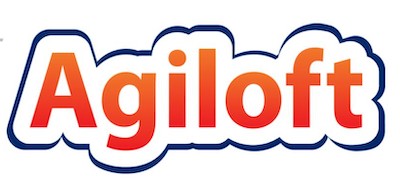
By Andy Wishart, Chief Product Officer, Agiloft.
The events of the last two years have ensured that the business case for implementing a contract lifecycle management (CLM) solution has never been clearer. CLM is now widely seen as an essential tool in a businesses’ ongoing efforts to manage the entire life cycle of their contracts. The business world has thankfully emerged from a phase of thinking that CLM was about legal efficiency, and now consider it to be central to enterprise productivity, risk management, and compliance.
As a result, many CLM providers, including Agiloft, have seen a surge in interest since the pandemic. Last year (2020), Gartner experienced a 40% increase in CLM inquiries. Amidst this growth, the CLM market itself is maturing. On the solution side platforms have evolved to a point of maturity that very few envisaged five years ago, and what used to pass for CLM no longer cuts it amongst enterprise users.
Enterprise users are now demanding flexible platforms that can turn contracts into data and enable their peers from across the business to access and interact with that (contractual) data. These users need tools that transform contractual documents into business-critical data assets, which serve as the DNA for their business’s relationships and instruction code for optimising those relationships to drive real business value.
‘Contracts, regardless of type, rarely stand alone in an organisation. They are an extension of a previously initiated process (such as an RFP or sales proposal) and govern the relationship between two parties for a period of time. Often, the ROI of a digital contract process is extended by integrating into other applications. The type of integration needed generally varies depending on the contract type.’ – Critical Capabilities for Contract Lifecycle Management, 2021, Gartner
If CLM wants to be seen as an enterprise solution, rather than just legal technology, a legal department’s partners – in sales, procurement, and finance – need to initiate, interact, and realise the value of contract data. That contract data also needs to be shareable with other systems, so it can be actioned and used to surface insights across the business, in a variety of scenarios. Connecting a legal team to its business partners and the systems they use is essential to break down the siloed approaches to business-critical processes and data.
Just as Salesforce made it easy to share sales data across an entire business, stopping CRM being owned by just the sales team, my team and I are expanding the integration capabilities and the analytics offering of Agiloft’s CLM platform to drive real enterprise value. We understand that teams need to be able to work with contracts and contract data in the tools they are comfortable with, and work with daily; whether it’s in their CRM or ERP, Microsoft Word, Outlook, or their Teams messaging apps. Just as contracts (themselves) span various departments and operational workflows, so too must the CLM integrate with the tools teams rely on to do their jobs.
In today’s increasingly connected, distributed workplace, businesses are demanding tools that enable their teams to work through deeply connected experiences and maintain ease of use. Collaboration, communication, and the ability to share insights across departments, and with remote teams, has become critical to the functionality of businesses. The challenge for my team and our peers across the CLM landscape is to ensure our tools are being used correctly, and by enough people in an organisation for users to get true value from their investment.
As a result, both the user experience and user interface design of any enterprise technology are crucial. We need to design our CLM platforms and applications to be accessible to multiple stakeholders, and then ensure our users can access the information they need intuitively and in a format that they are familiar with. While legal users are always going to be central to the process of managing the entire life cycle of any organisation’s contracts, we need to encourage non legal users in sales, procurement, HR, and finance to effectively manage any contract they are signing or could be affected by.
We need to remember that different users will need different things from their CLM. In any organisation there are people who build the contract management workflows that teams will be using internally, and then there are people use those workflows. Both sets of stakeholders have a different set of problems that they’re trying to solve. They will have different workflows and they will demand different experiences.
That means we need to build user experiences via integrations and apps inside platforms, like Salesforce, or inside productivity solutions, like Microsoft Word – or integrate with and enable rich functionality inside ubiquitous collaboration tools, like Microsoft Teams. This ensures users receive notifications or alerts for tasks, like approving contracts, directly within an interface they use to communicate with their colleagues and keep track of other enterprise notifications and approvals.
The concept of democratizing CLM is multi levelled. At one level, we need to enable anyone within the business to interact with a contract and the contracting process, whether that is creating a new contract or managing an existing contract through the multiple workflows that are required to ensure its actioned properly throughout its lifecycle. This helps us move away from the outdated idea that contracts are the domain of a select few users within the legal department and enables the self-service tools that make contracts accessible across the enterprise.
Then there’s the level down: We also need to provide the lawyers with self-service tools that help them codify their expertise, enabling an industrialisation of the contracting process. For example, designing templates and clause library tools empowers the very teams that are closest to the content and the compliance standards of the company. In turn, codifying and automating compliant contracting processes assists in freeing up the legal team to use their time and considerable abilities on more complex matters, while improving the speed and compliance of everyday contracts.
Implementing a contract management system offers businesses of all shapes and sizes significant savings in purchasing, enables more efficient sales cycles, and drastically lowers compliance risk. It is time CLM vendors rose to the challenge of ensuring their technology meets the needs of users across the enterprise, which gives relevant stakeholders the tools and flexibility they need to scale and adapt quickly and become truly agile.
You can find more information about Agiloft and connected contracting here.
And you can see a recent AL TV Product Walk Through of Agiloft’s latest CLM product release here.
—

[ Artificial Lawyer is proud to bring you this sponsored thought leadership article by Agiloft. ]